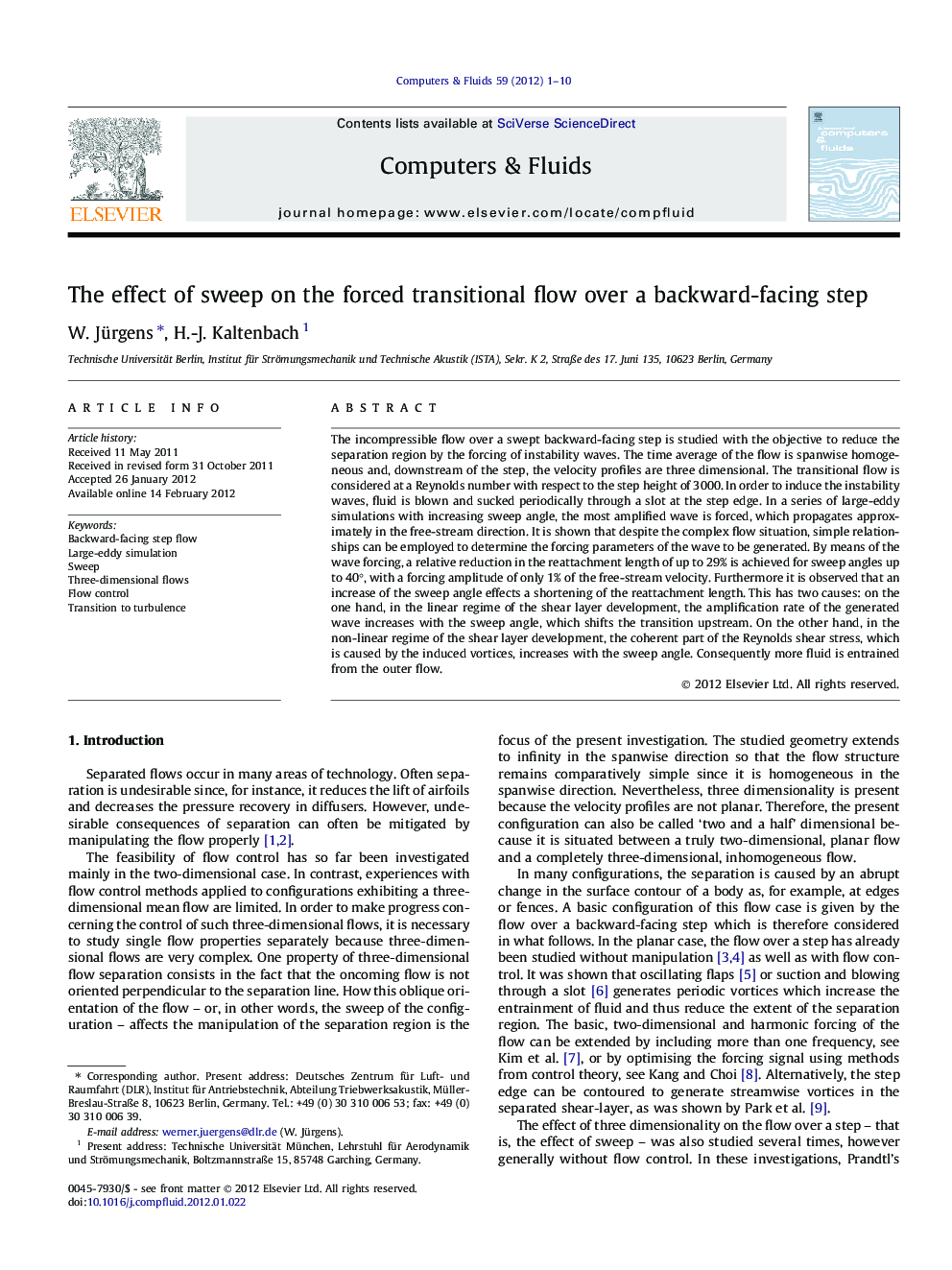| کد مقاله | کد نشریه | سال انتشار | مقاله انگلیسی | نسخه تمام متن |
|---|---|---|---|---|
| 762464 | 1462751 | 2012 | 10 صفحه PDF | دانلود رایگان |

The incompressible flow over a swept backward-facing step is studied with the objective to reduce the separation region by the forcing of instability waves. The time average of the flow is spanwise homogeneous and, downstream of the step, the velocity profiles are three dimensional. The transitional flow is considered at a Reynolds number with respect to the step height of 3000. In order to induce the instability waves, fluid is blown and sucked periodically through a slot at the step edge. In a series of large-eddy simulations with increasing sweep angle, the most amplified wave is forced, which propagates approximately in the free-stream direction. It is shown that despite the complex flow situation, simple relationships can be employed to determine the forcing parameters of the wave to be generated. By means of the wave forcing, a relative reduction in the reattachment length of up to 29% is achieved for sweep angles up to 40°, with a forcing amplitude of only 1% of the free-stream velocity. Furthermore it is observed that an increase of the sweep angle effects a shortening of the reattachment length. This has two causes: on the one hand, in the linear regime of the shear layer development, the amplification rate of the generated wave increases with the sweep angle, which shifts the transition upstream. On the other hand, in the non-linear regime of the shear layer development, the coherent part of the Reynolds shear stress, which is caused by the induced vortices, increases with the sweep angle. Consequently more fluid is entrained from the outer flow.
► Large-eddy simulations of the transitional flow over a swept step are performed.
► The most amplified wave derived from stability theory is forced in the flow.
► The amplification rate of the wave in the linear regime increases with sweep.
► The coherent Reynolds stresses in the non-linear regime increase with sweep.
► The reattachment length decreases with increasing sweep angle.
Journal: Computers & Fluids - Volume 59, 30 April 2012, Pages 1–10